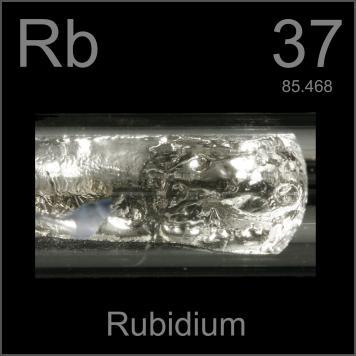|
|
Rubidium is a soft, silvery-white metallic element of the alkali metals group (Group 1). It is one of the most electropositive and alkaline elements. Rubidium can be liquid at ambient temperature, but only on a hot day given that its melting point is about 40°C. It ignites spontaneously in air and reacts violently with water and even with ice at -100 C, setting fire to the liberated hydrogen. As so with all the other alkali metals, it forms amalgams with mercury. It alloys with gold, cesium, sodium, and potassium. Its flame is yellowish-violet. Applications Rubidium and its salts have few commercial uses. The metal is used in the manufacture of photocells and in the removal of residual gases from vacuum tubes. Rubidium salts are used in glasses and ceramics and in fireworks to give them a purple colour. Potential uses are in ion engines for space vehicles, as working fluid in vapor turbines, and as getter in vacuum tubes. |
